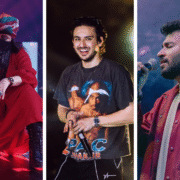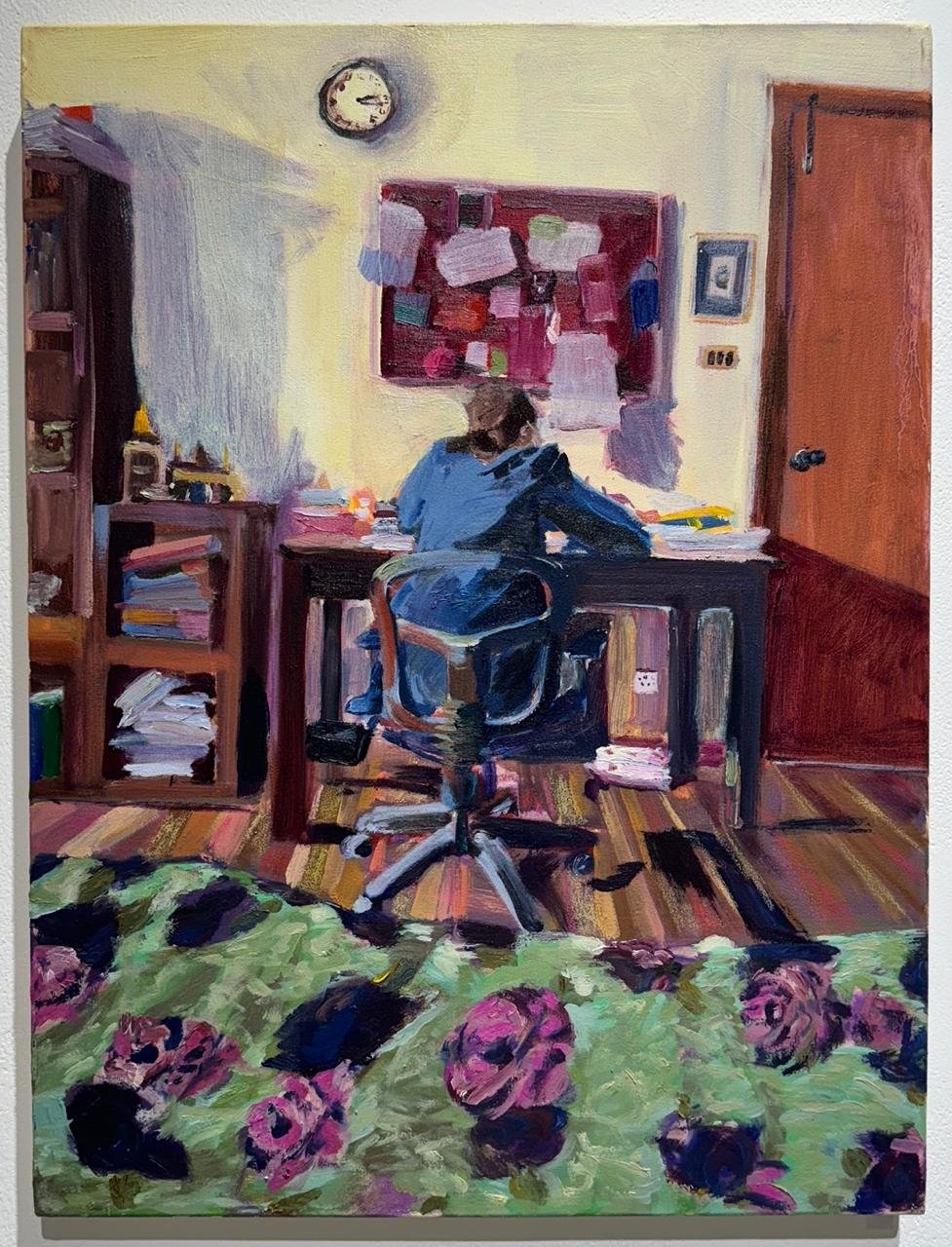
Biography
Born in Lahore, Pakistan, in 1996, Irum Rahat completed her BFA in painting from the National College of Arts, Lahore in 2019 and her MA in Fine Arts (distinction) from Central Saint Martins in 2023.
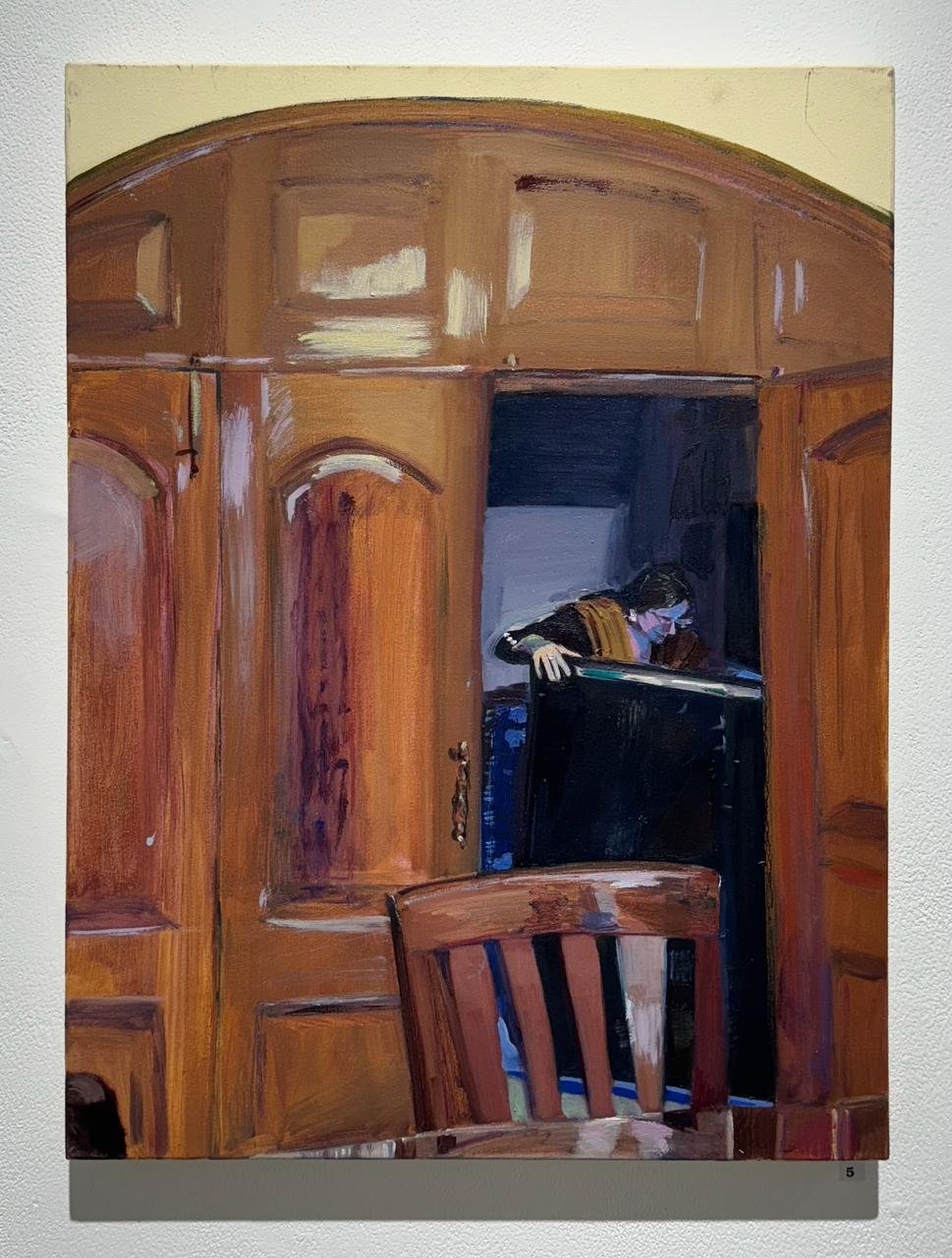
Rahat’s work has been showcased in a variety of international exhibitions, highlighting her growing presence in the contemporary art scene. Some of her recent exhibitions include “Look” at Rajiv Menon Contemporary, LA (2025), and “If I Become An Alien?” at Pause/Frame, London (2025). Her publication ‘I drew’ was part of Offprint at Tate Modern, London (2023). She has also been part of several group shows in Pakistan at notable venues such as the Alhamra Arts Council and the Shakir Ali Museum in Lahore and had her first solo presentation of paintings at VM Art Gallery in Karachi (2024). She is currently working in London.
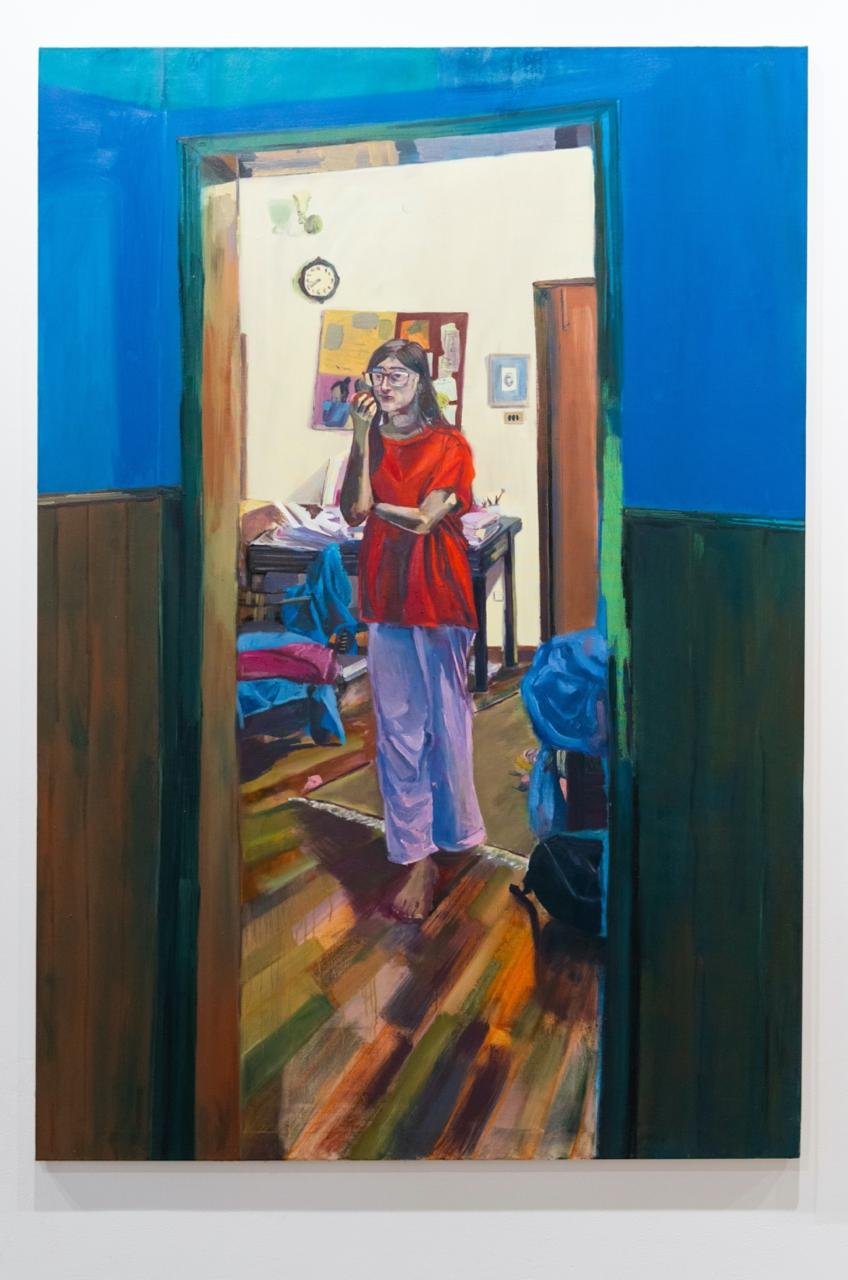
Q/A with Irum Rahat
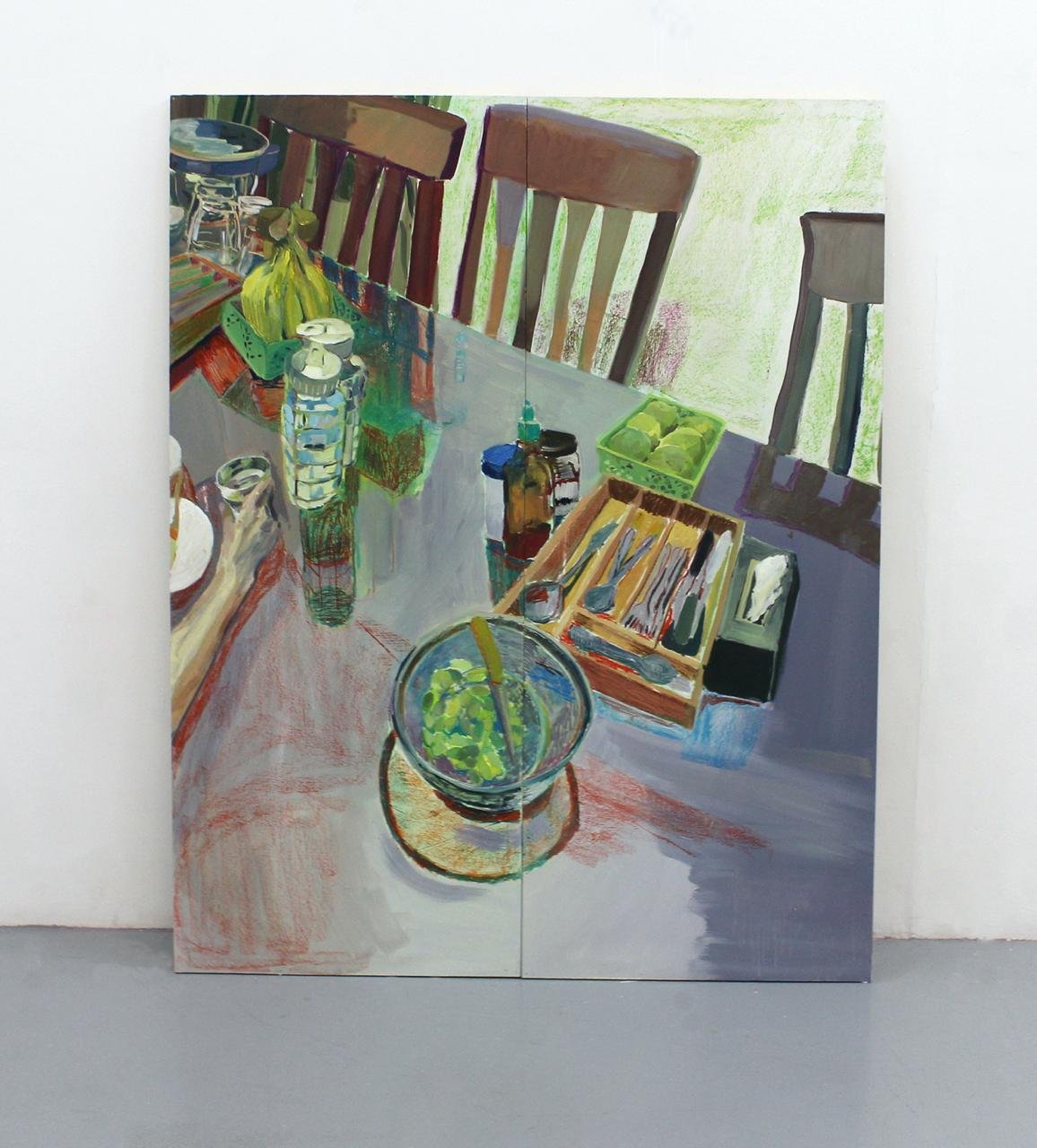
What attracts You To Painting Quiet, Everyday Spaces?
I’m drawn to the subtleties embedded in the everyday in the way a room, an object, a character or the fall of light can hold traces of a particular life, a moment in time, or an entire cultural rhythm. These spaces aren’t always inherently quiet, but in painting them I slow them down, distilling them into a suspended stillness. Even the most ordinary settings carry emotional charge; whether what’s happening is mundane or dramatic, it becomes a site of resonance for me once I begin my process of making a new body of work.
How Do You Find Beauty or Meaning in the Mundane?
That stillness is often where meaning reveals itself. The mundane doesn’t need to be beautified because I think it already holds significance. These everyday environments are records of the lives lived within and around them. Precisely because they’re so easily overlooked, they become repositories of culture, gender, class, and the particularities of the past and present or private and public. My role is to pause and look closely; in translating them into paint, I allow the overlooked to step into visibility, where I suppose others can acknowledge that significance too.
How Do You Decide Which Ordinary Moments are Worth Capturing?
That process begins instinctively so it can vary but something about a colour, a character, or a mood excites me and become a point of departure for work to follow it. It can sometimes be as simple and as thrilling as being excited by a certain scale or a colour. Often this selection evolves in conversation with curators or gallerists, whose perspectives can sharpen the direction. In the end, the moment I choose to paint isn’t simply an isolated scene as it’s part of a continuum of attention, a thread that runs through my practice from observing to remembering to documenting to translating into various mediums sometimes before it finally comes to paint.
How does Memory Shape the way you Paint?
My paintings often carry the feeling of a transitory space. Memory, for me, is shaped by living between places; there’s a constant sense of belonging everywhere and nowhere at once. That in-between state becomes embedded in the way I reimagine these memories in my work. I feel comfortable in the archives of personal, familial and cultural histories but with a diasporic lens these spaces feel both familiar and dislocated, rooted in personal experience yet hovering at the threshold of another world. In that sense, painting becomes a way of keeping those transient experiences alive, allowing them to expand and shift in the act of making.

